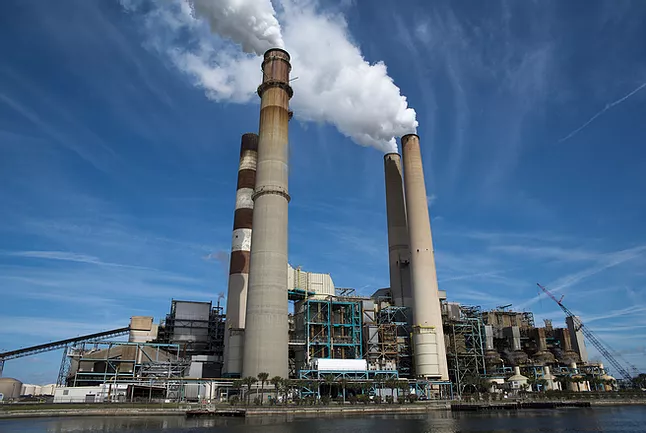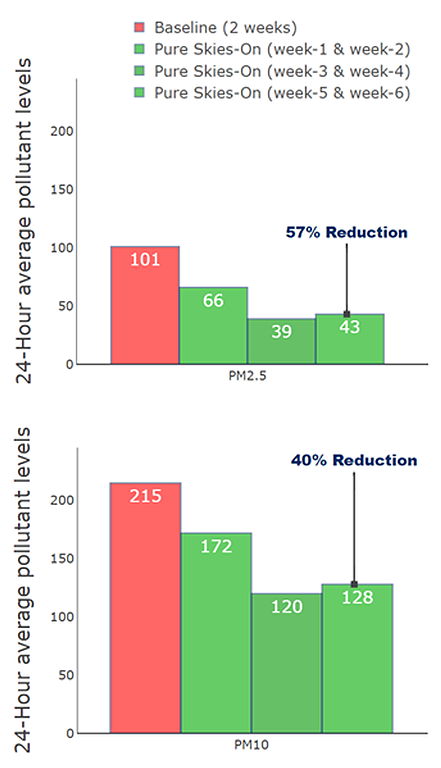PM 2.5
Power Plant Station Capacity
PM 10

Anyone working in a thermal power plant knows that air quality often suffers. A significant amount of thermal power plant pollution affects the well-being of workers at the plant, the plant’s residential colony, as well as surrounding communities.
One of Devic Earth’s partners, a 2000 MW coal based thermal power plant, wanted to improve ambient air quality at one of their plants. The plant was already equipped with the latest air pollution control equipment and followed best practices for managing fugitive emissions.
Despite these measures, air quality measured inside the plant inside was poor. Particulate matter – PM2.5 and PM10 – were 101 and 215μg/m3, respectively, averaged over one week. This is much higher than what is recommended by the National Ambient Air Quality Standards (PM2.5 < 60 μg/m3 & PM10 < 100 μg/m3) and 5 to 10 times higher than standards of the World Health Organization..
Employees were exposed to high levels of harmful pollutants which would impact their health and productivity.

Two Pure Skies systems were installed inside the Plant for the control of thermal pollution. The installation consisted of two Pure Skies base stations, extenders, and two third-party air quality monitors ( Airveda Pvt. Ltd., Gurgaon ). The system was configured to handle particulate pollutants (PM10 and PM2.5) emitted from thermal power plants across the entire area – approximately 250 acres.
Outdoor air pollutant levels were monitored continuously at appropriate locations inside the campus to help the customer understand the efficacy of Pure Skies, as well as to provide real-time data.
For comparison, a reference monitor run by the state pollution control board located about 3.5 km away was used as the comparison monitor, outside the Pure Skies zone of influence.
It took just one day to complete the installation. Two base stations, extenders, and two air quality monitors were installed on various building rooftops. No floor space in worker areas was required. Equipment was plugged in and connected wirelessly to the local GSM data network in the area (BSNL).
Power requirements: Routine power supply (ordinary 10A sockets). Each base station and air quality monitor is equipped with battery backup (rarely needed in a power plant).
Once online, the performance of each air pollution control unit is monitored 24×7 by Devic Earth.

After Pure Skies was powered on, a steady improvement was observed in the air quality (Figure 1). In comparison, reference-grade monitors operated by the state pollution control board approximately 3 km away (out of the Pure Skies zone of influence) showed relatively stable values during this time.
Figure 1: Improvements in air pollution levels with Pure Skies at a thermal powerplant. The red and green bars are the Pure Skies-Off (7 days) and Pure Skies-On periods (7 days), respectively. The successive green bars depict the incremental decrease in the levels of the pollutants over 7-day intervals. Data source: 3rd party air quality monitor (Airveda Pvt. Ltd.), pre-calibrated against a reference-grade monitor.
Pure Skies is a state-of-the-art technology that ensured that the employees working in the plant breathed clean air at work.
